These are probably the earliest pictures we have of what are likely to be pilots or other sea-farers at the top of the jetty. Probably taken in the late 19th century. The bottom one is clearly posed and there is speculation that the gentleman pointing is intended to signify the arrival of a vessel.
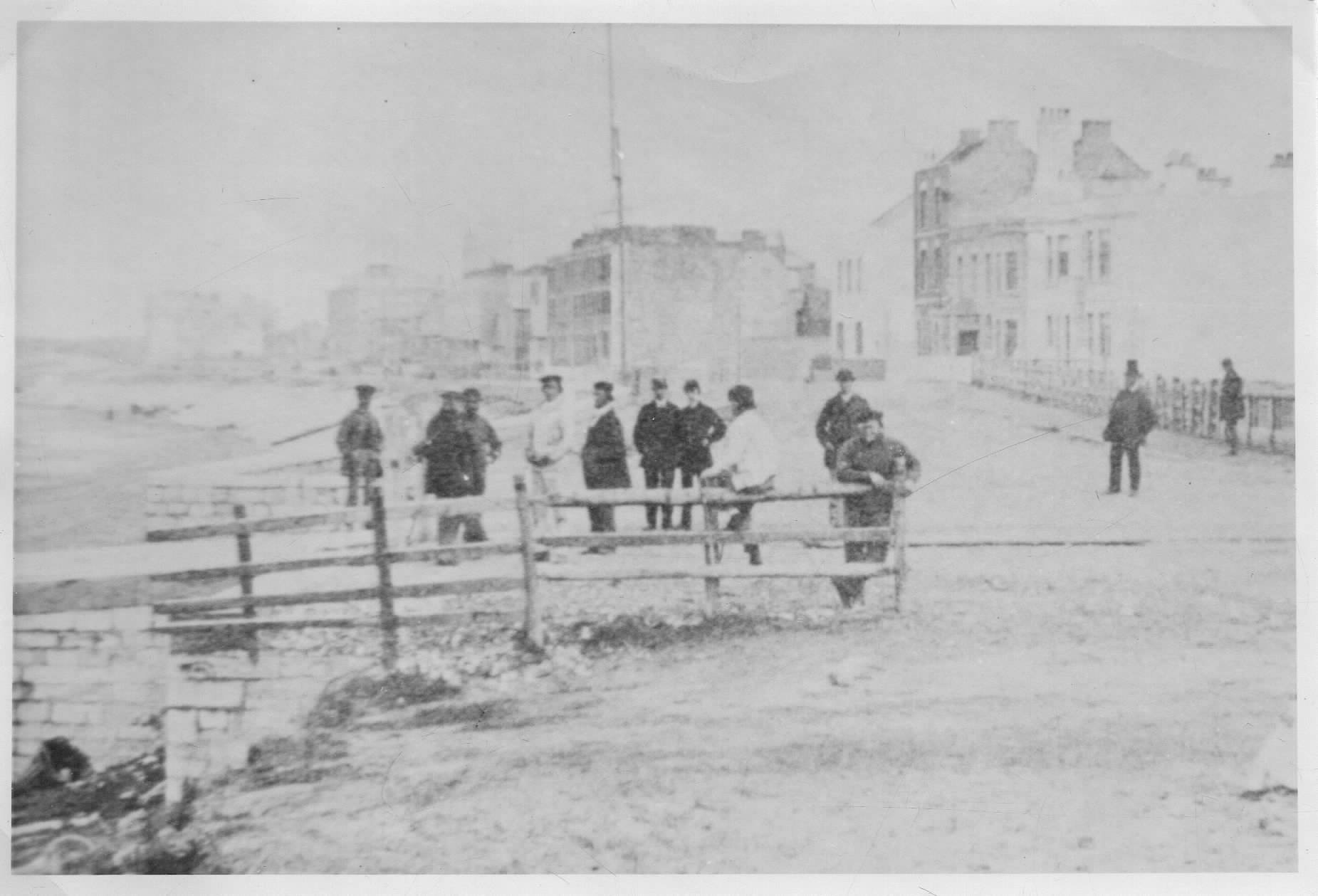
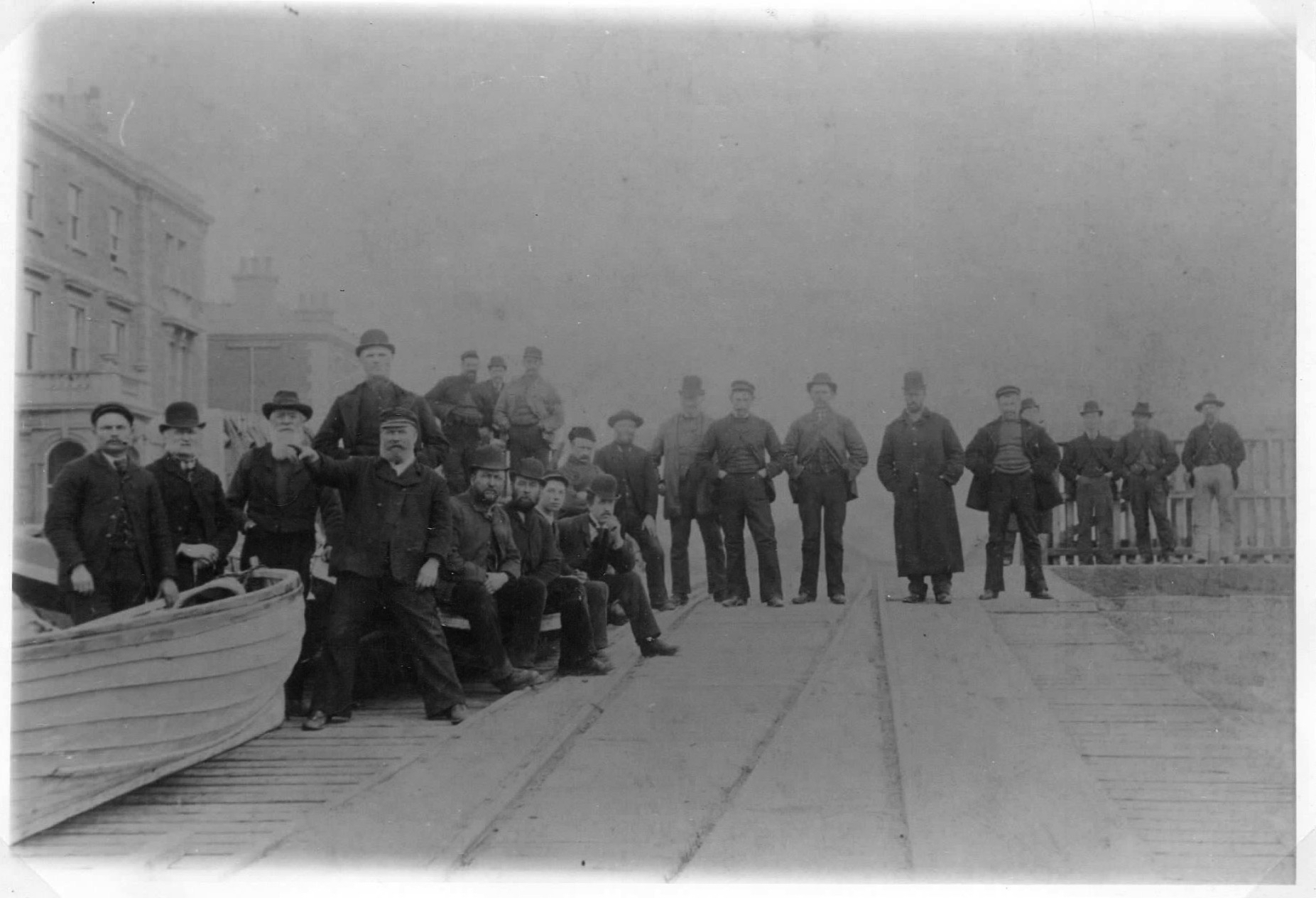
Below is a brig in the bay.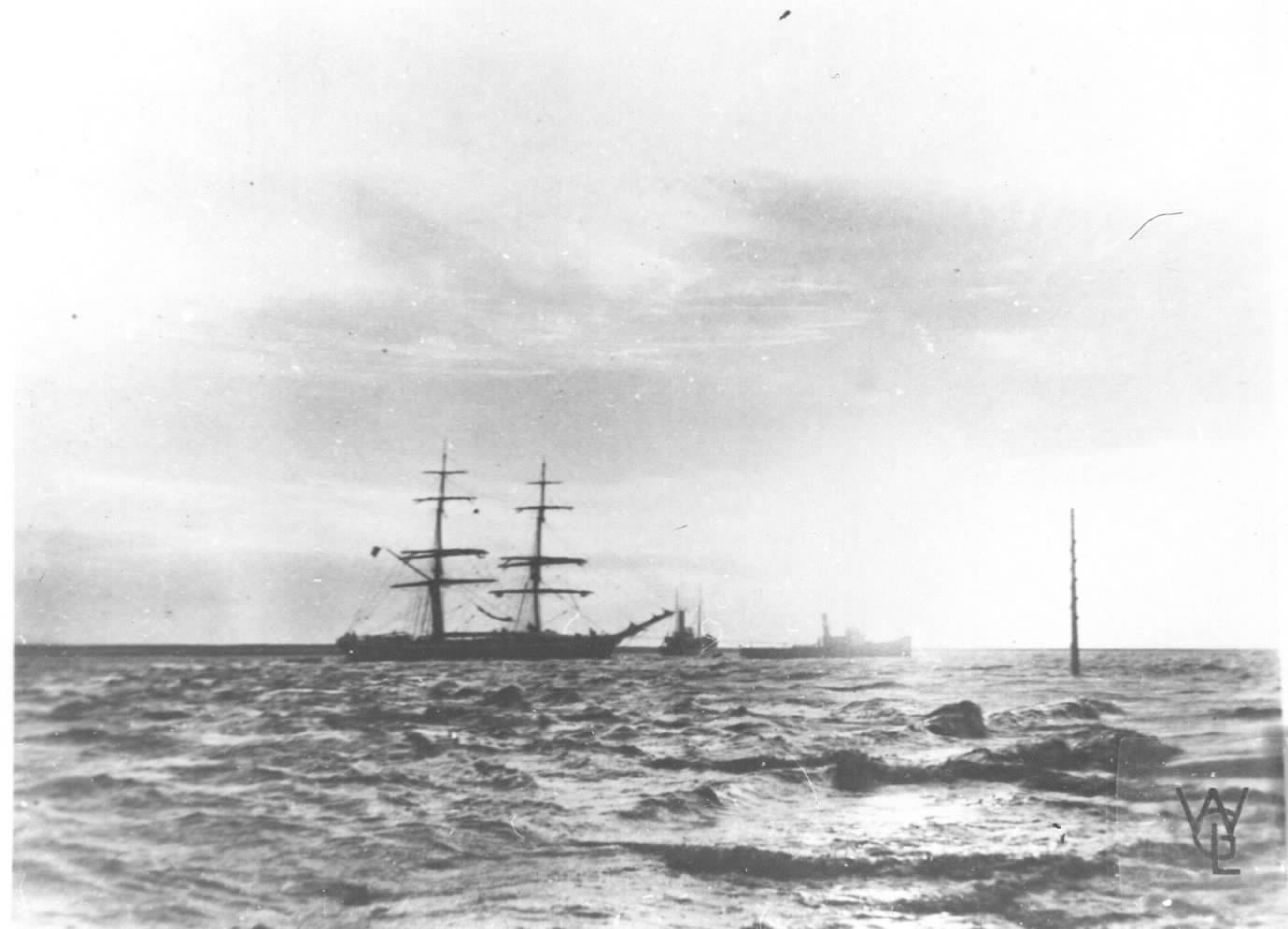
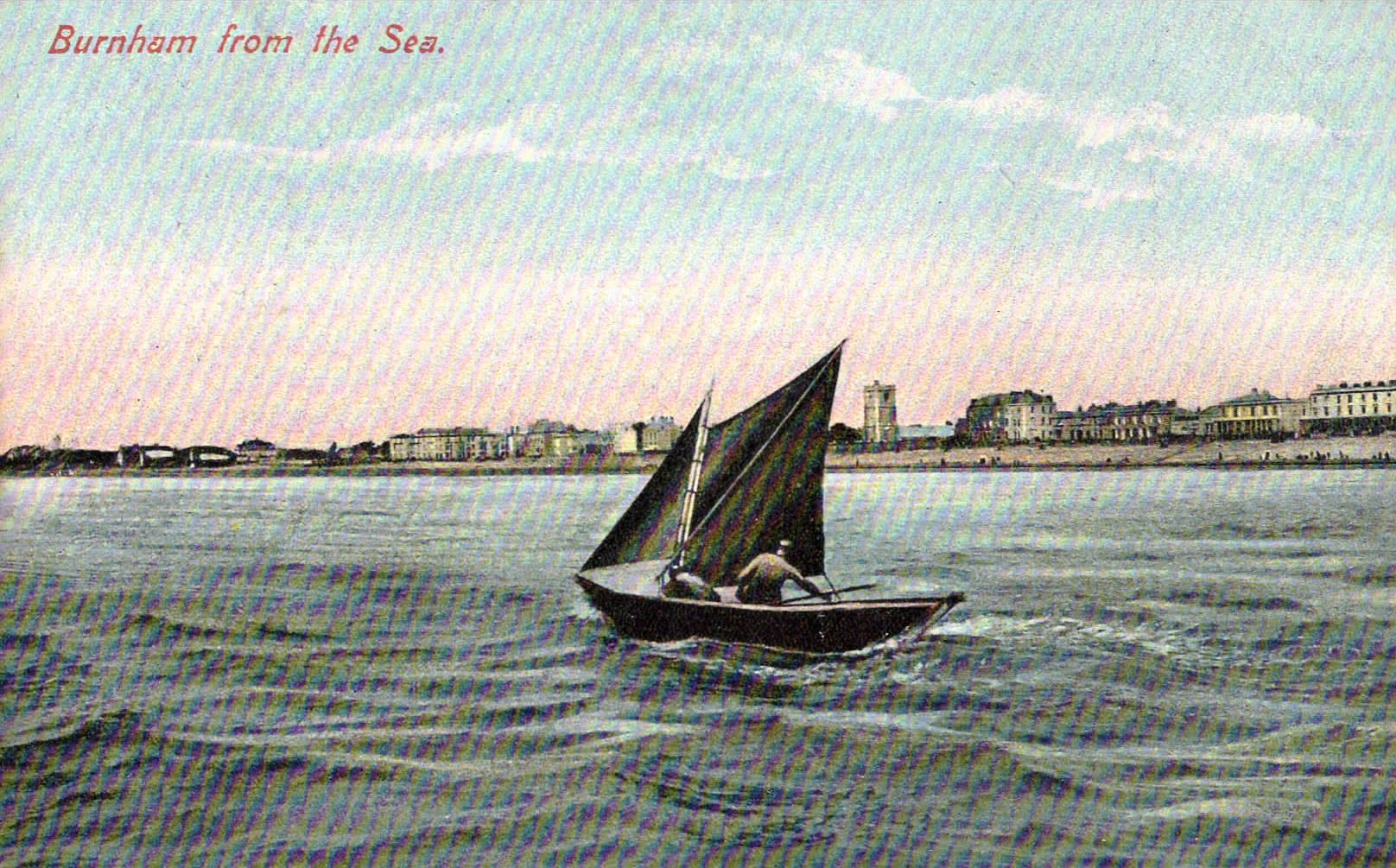
Above is a traditional ‘flatner’, a double ended, flat bottomed, open boat idea for use on the tidal River Parrett with its muddy banks. This particular boat is the Gore (19ft 6in) built by Henry Wilkins of Combwich and H.J. Kimber of Highbridge. Two men were needed to sail the boat, one to control the rudder and mainsheet, the other to operate the jibsheet and forward dagger board. Flatners were constructed of tongue and groove planks on a timber framed covered inside and out with tar. They were used throughout the year for fishing in the river and estuary. Smaller versions of these vessels were used for on the rhines for carrying harvested withies.(Thanks to Rita Probert and her book ‘Beyond the Shadows’ for this information)
RIVER TRAFFIC
Accidents sometimes occurred to cargo boats navigating the river.
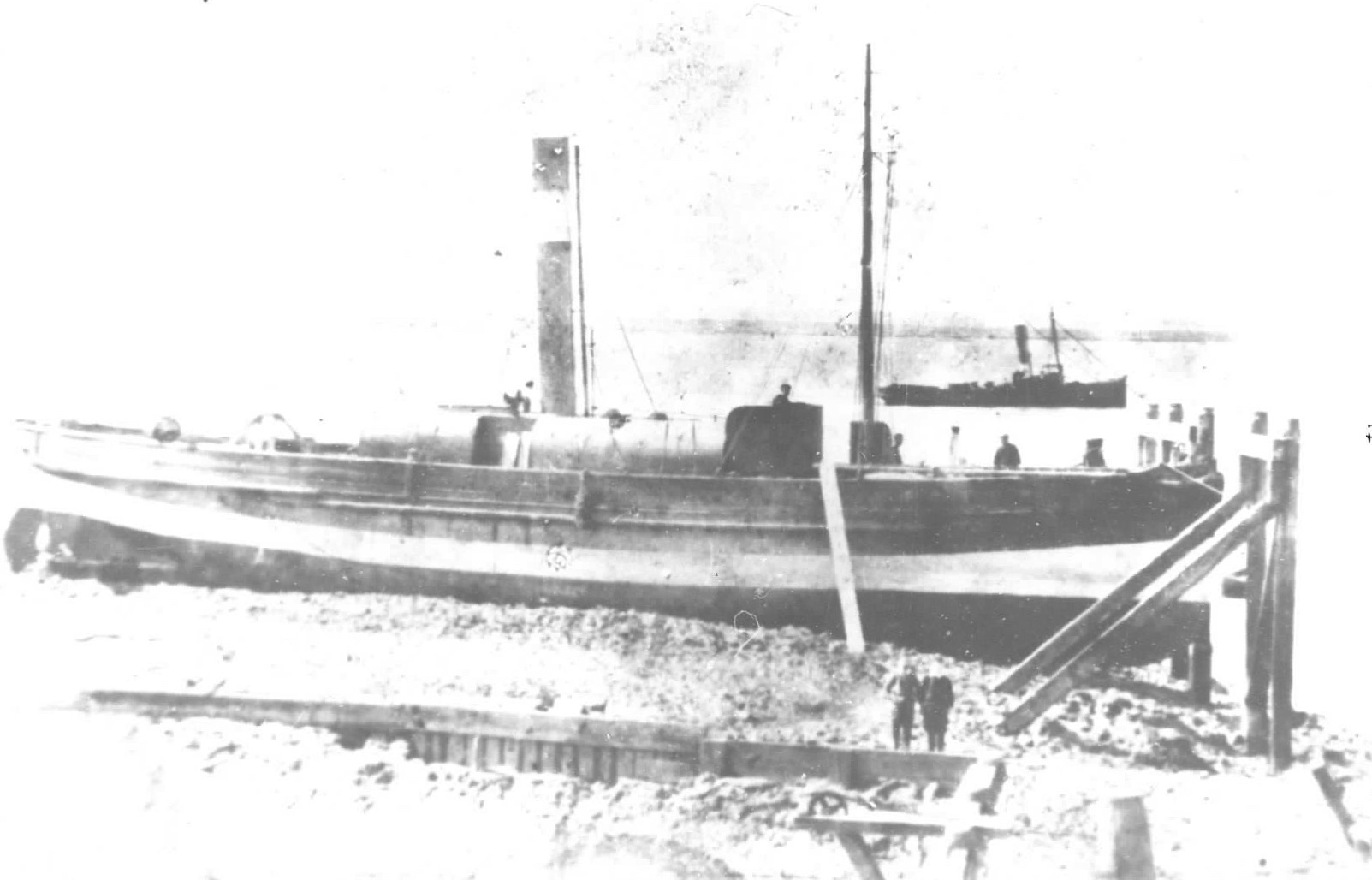
The Norwegian brigantine Eidsvold was taken in tow at the mouth of the Parrett by tugs Bonita and Victor on 8th November 1908. When only 200 yds short of the docks an easterly wind caused her bow to touch the west bank and she became a wreck. She was carrying 313 tons of deal boards from Norway was later sold as a wreck for £41 6s. (From ‘Bridgwater and the River Parrett’ by Rod Fitzhugh.)
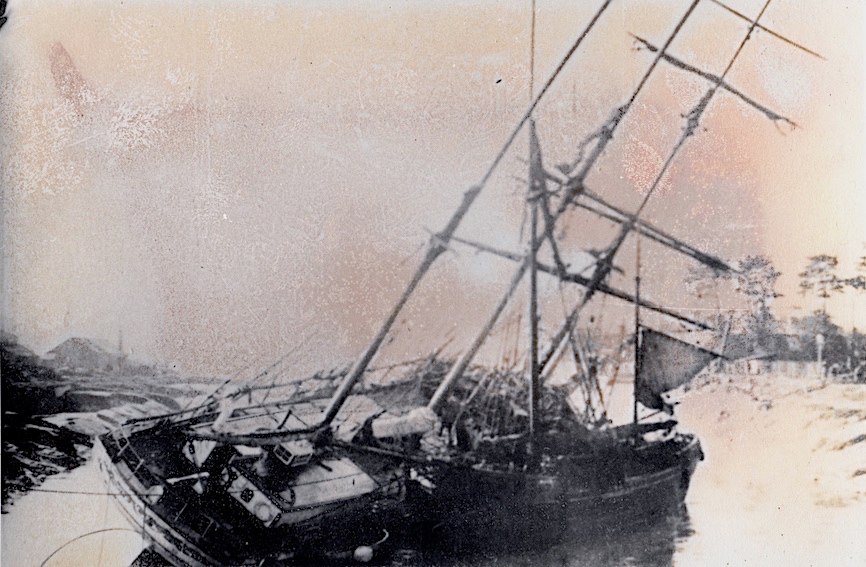
25th July 1909:

On Saturday 16 July 1921 the steamship Tender carrying a cargo of coal from Lydney, South Wales heeled over while being berthed at Dunball wharf. Her coal was partly offloaded into barges, and she was righted several days later with the help of a tug from Cardiff. She was scrapped in 1942 after sixty-nine years of service (From ‘Bridgwater and the River Parrett’ by Rod Fitzhugh.)
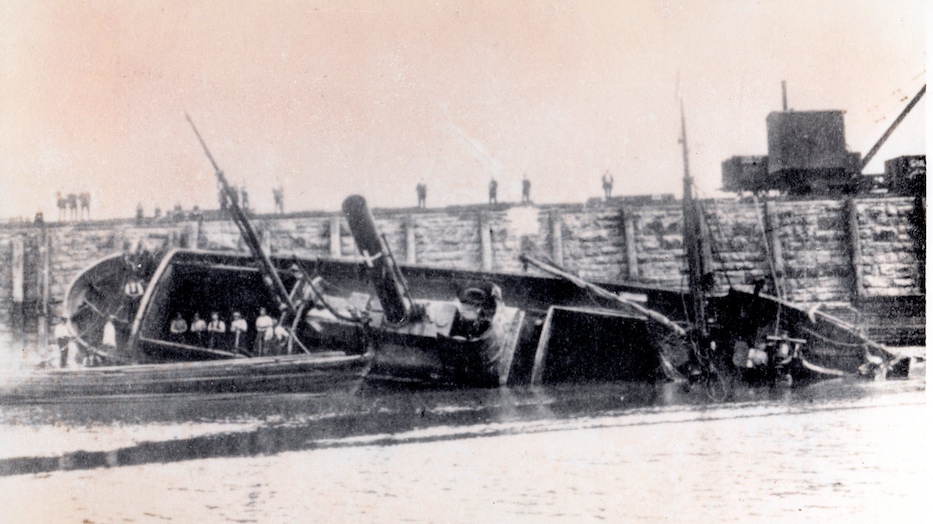
STEAMERS
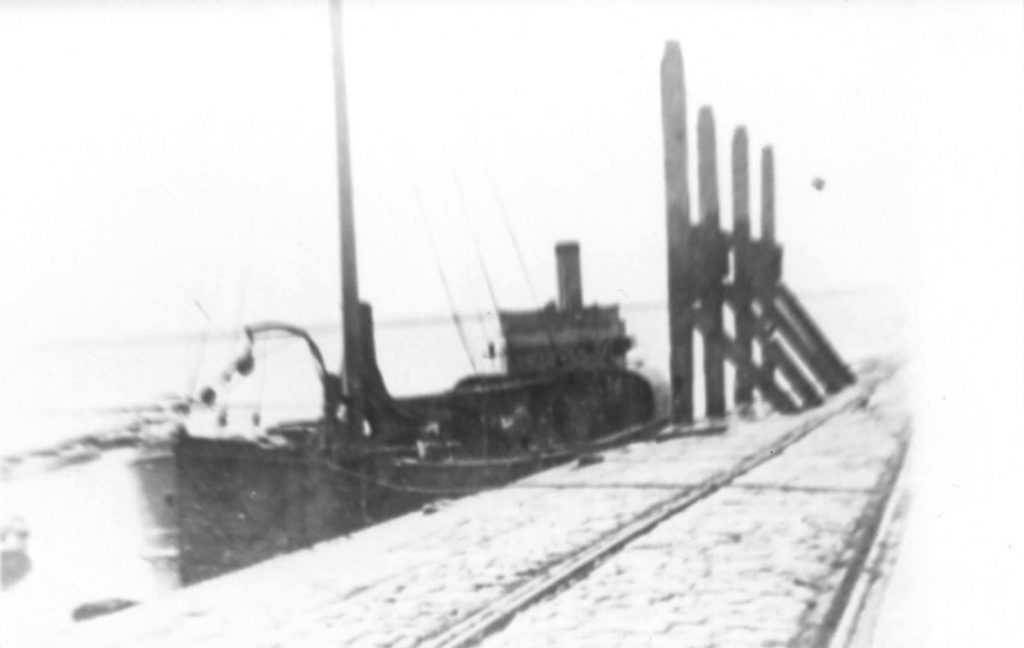 The Somerset and Dorset Railway’s ‘Alpha’.
The Somerset and Dorset Railway’s ‘Alpha’.
Some examples of advertising for the steamer services:
1866
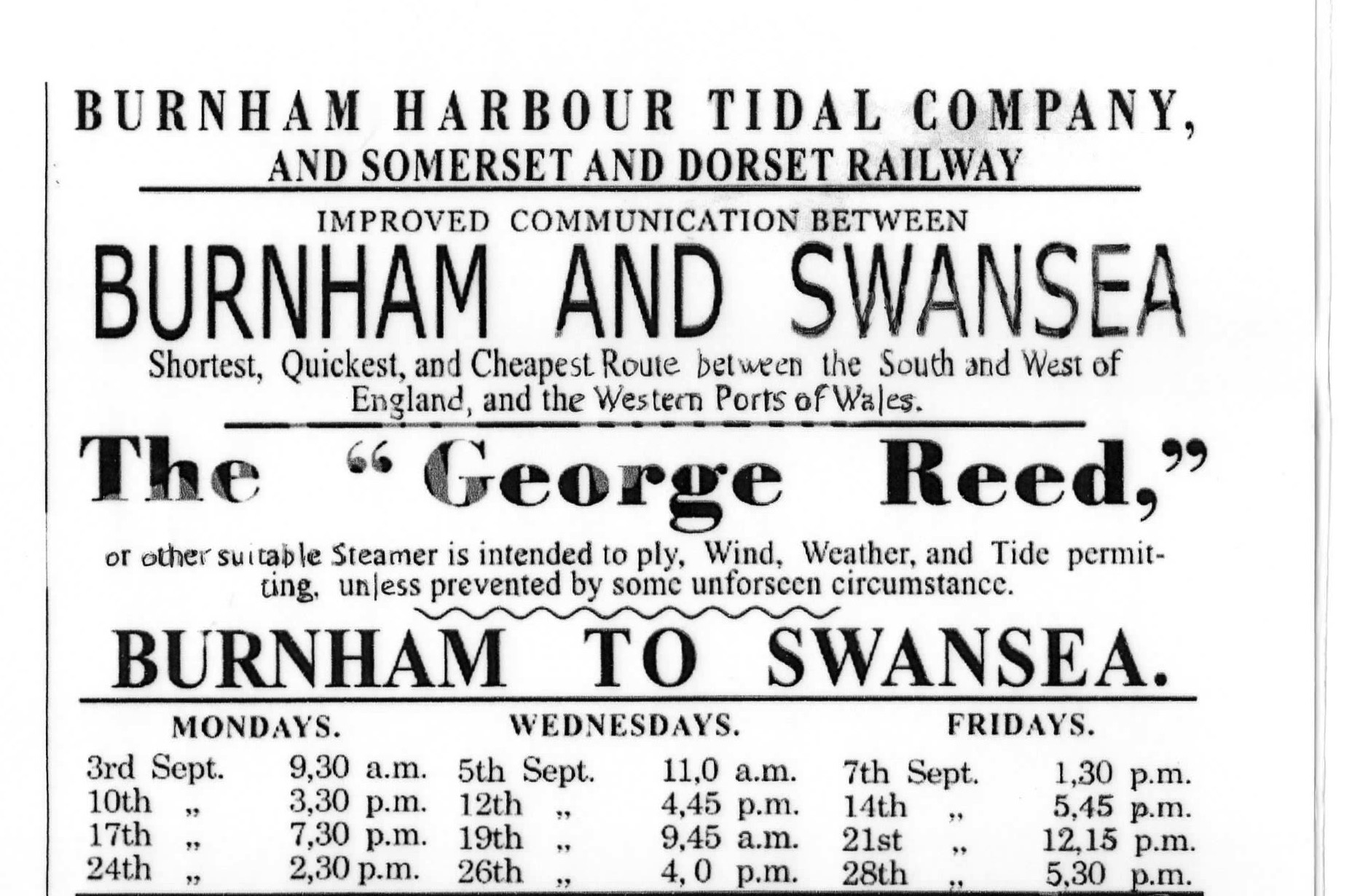
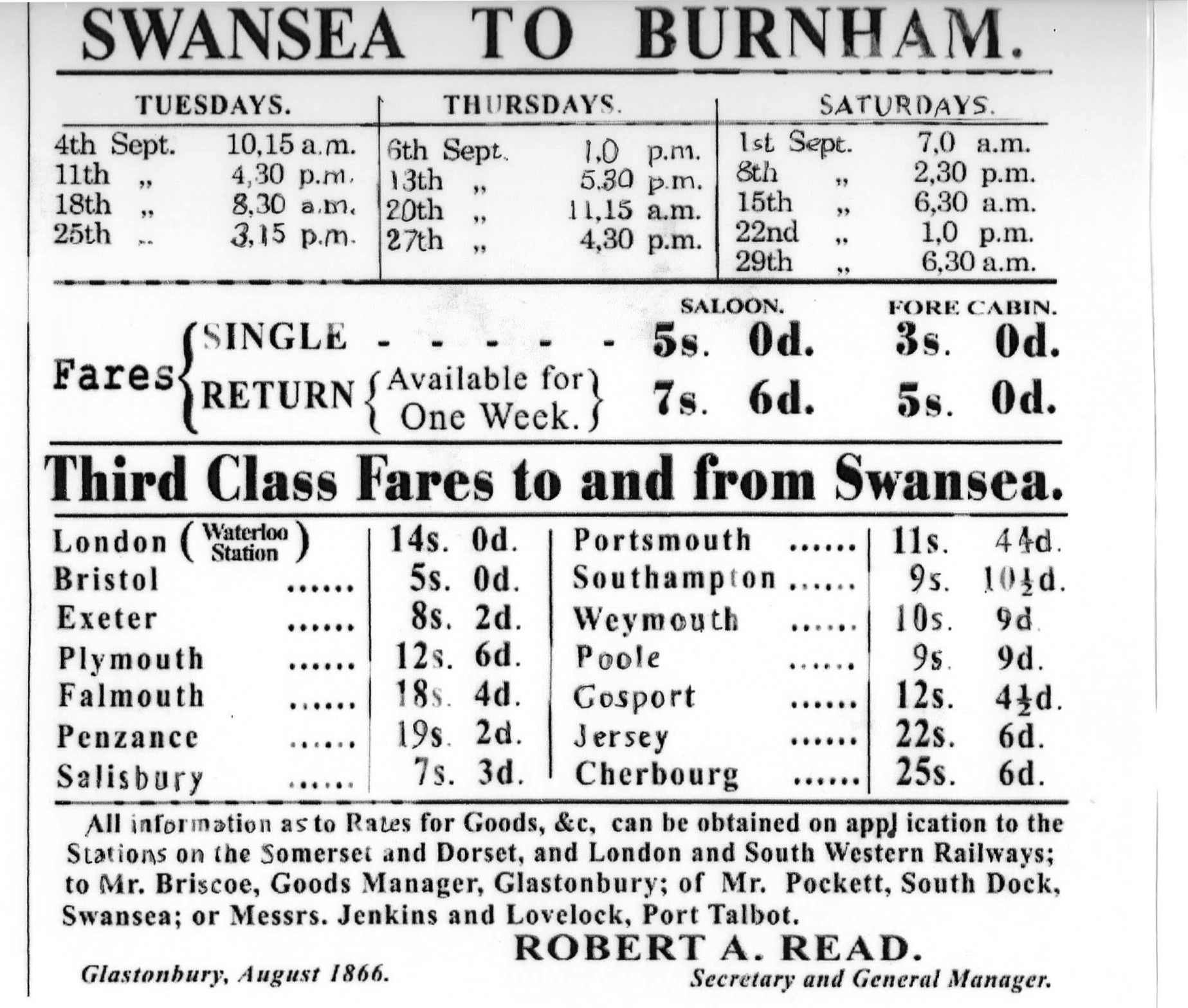
Date unknown
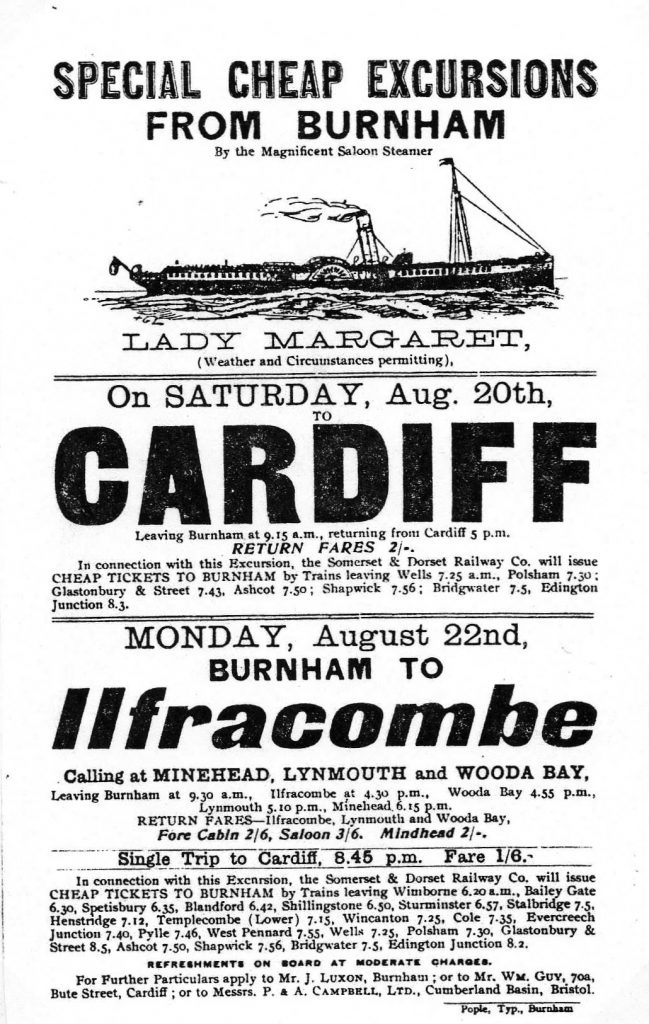
1898
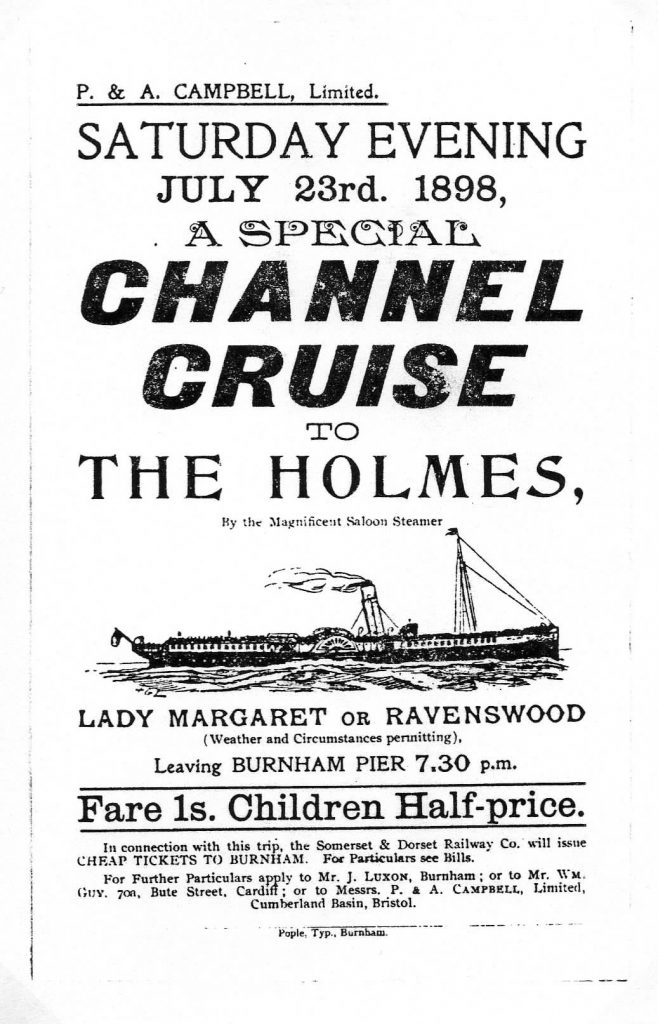
Below are some examples of the steamers that called at Burnham . The dates of the photos are not all known. For more information see the jetty page.

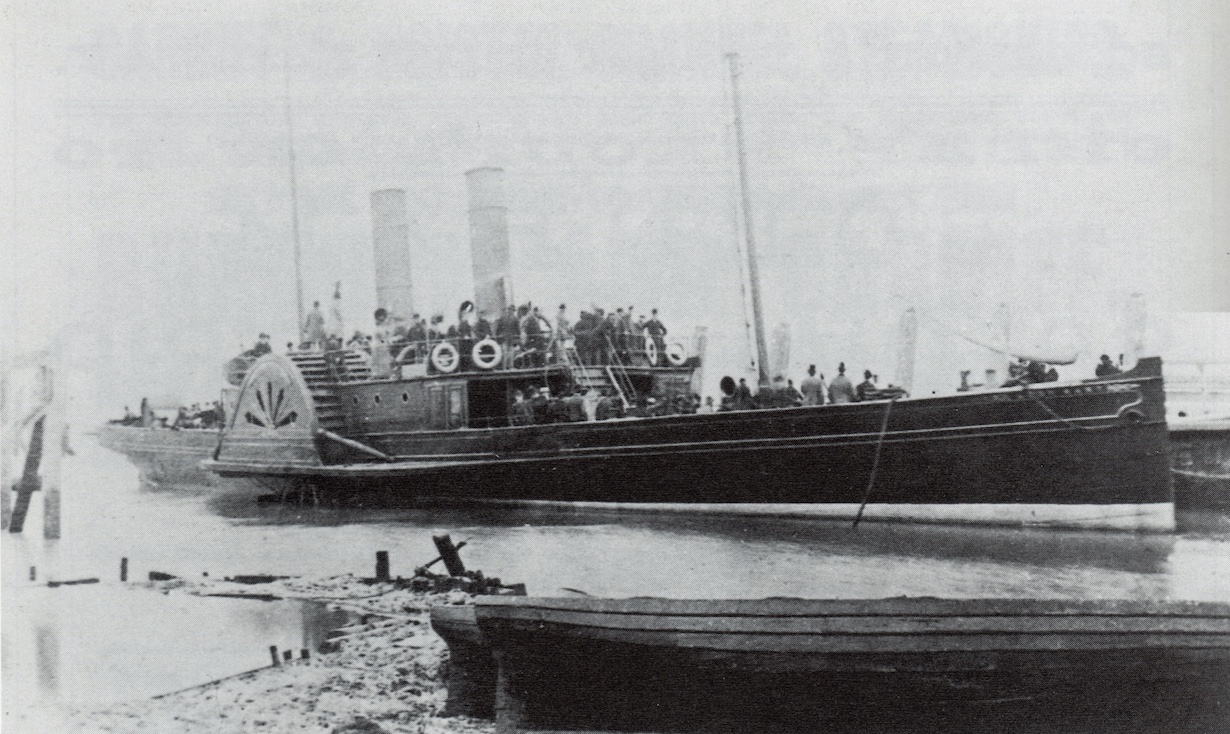
The Lady Mary on the Burnham to Cardiff run. Superseded by the ‘Sherbro’ (see Jetty)
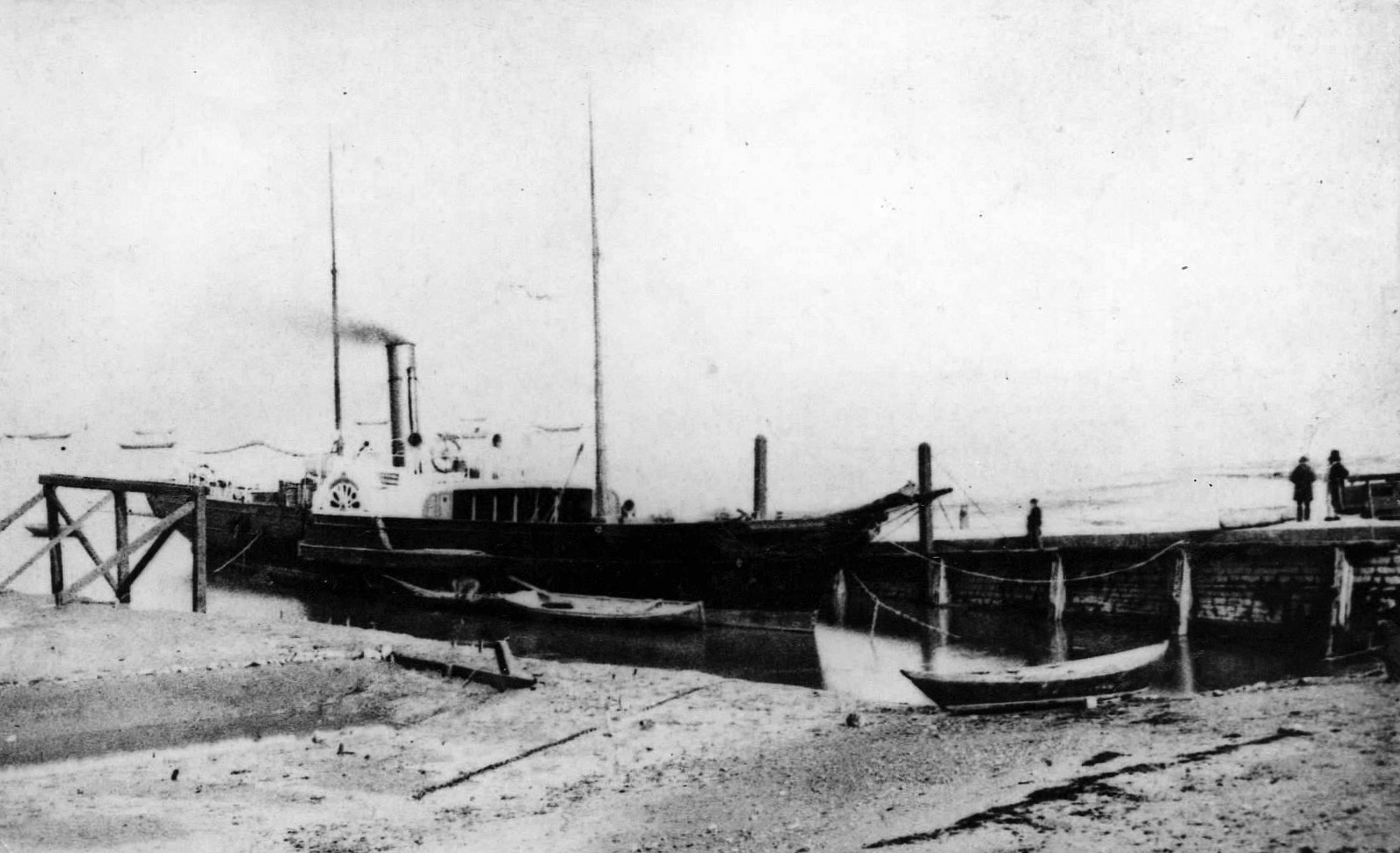 Above P.S. Heather Belle 1860’s
Above P.S. Heather Belle 1860’s
Below clipping from The Western Gazette, March 1866

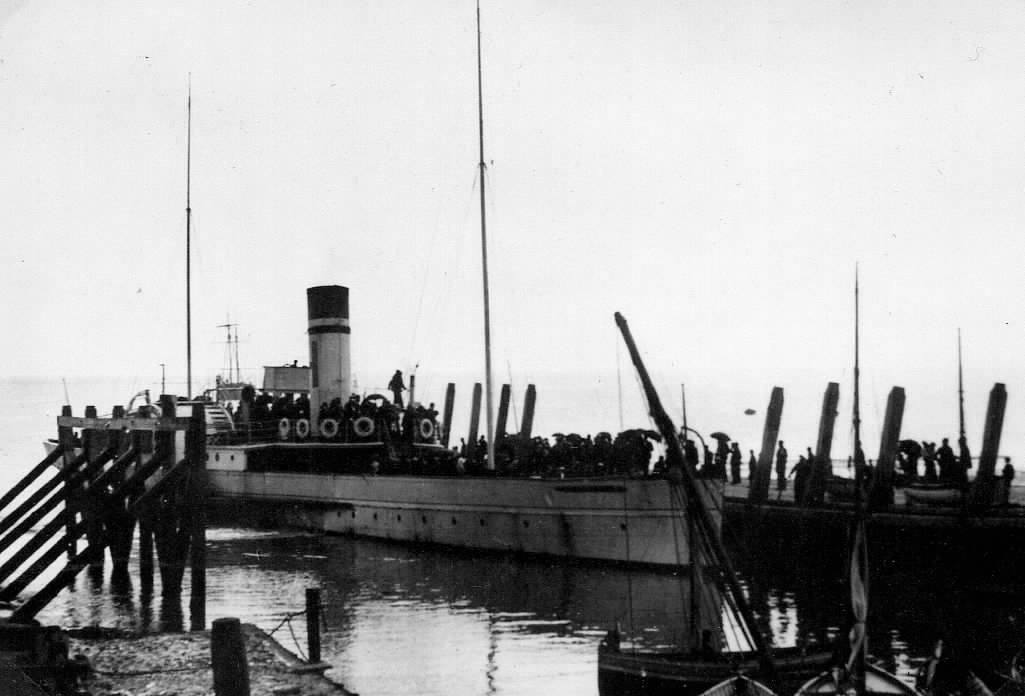 Hunt’s ‘Heather Belle’. A later ship of the same name.
Hunt’s ‘Heather Belle’. A later ship of the same name.
Western Gazette 1867:
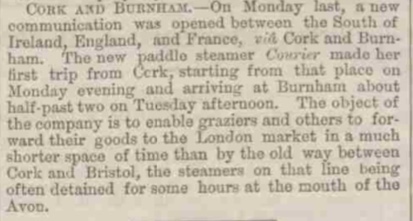
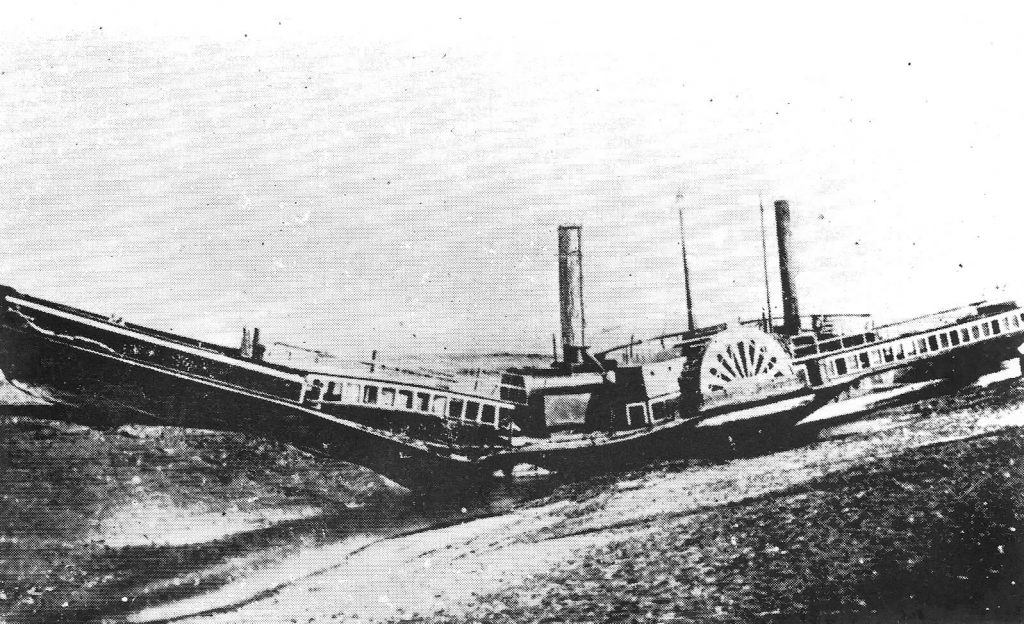 P.S. Ruby, wrecked at the jetty 1868.
P.S. Ruby, wrecked at the jetty 1868.
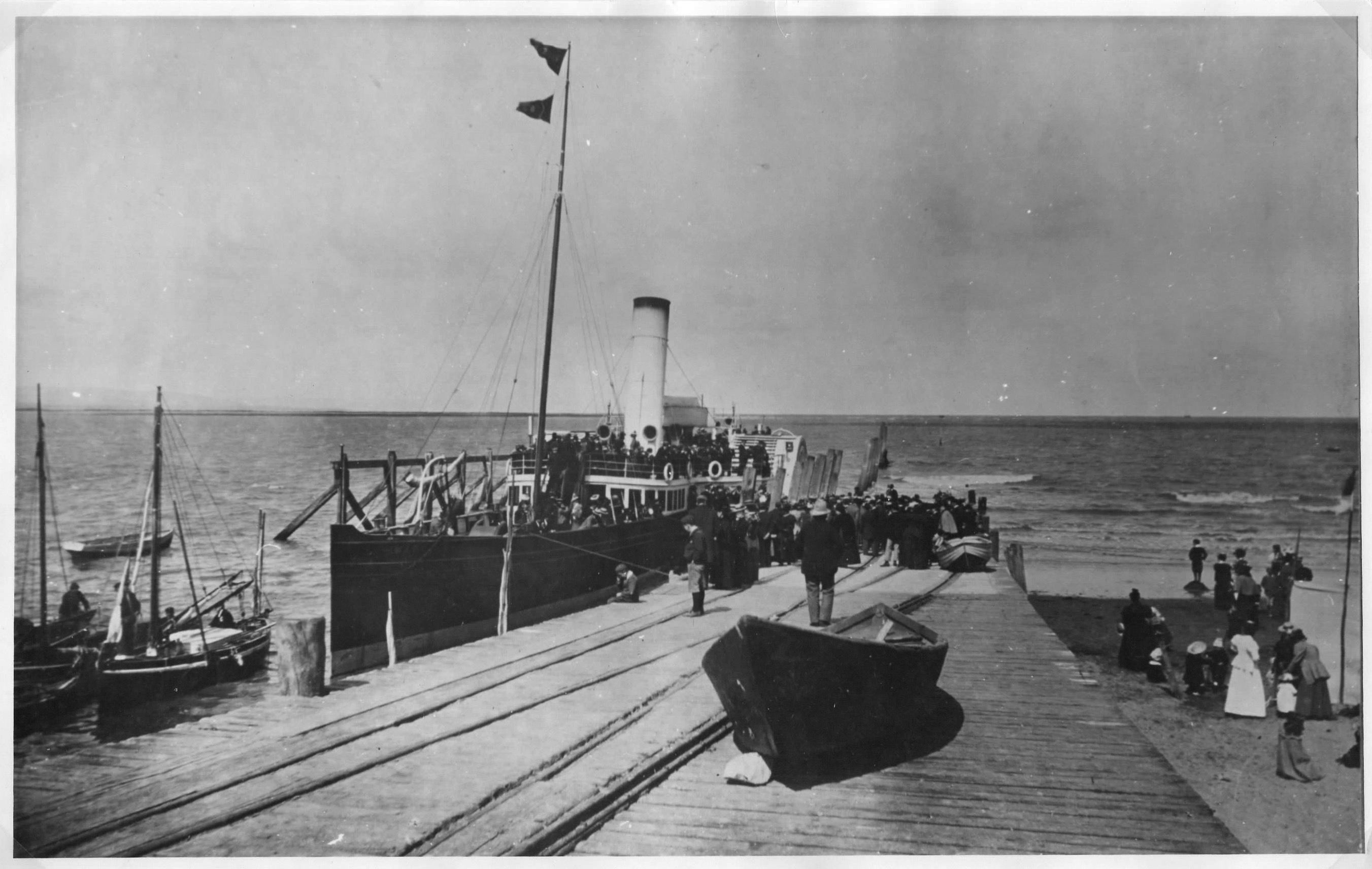 The Waverley (not the same as the one which currently works the channel). This particular departure was for a trip around the bay. The boy sitting on the side of the jetty is Fred King, son of the pilot ‘Titch’ King, who can be seen mounting the steps on the boat. Many decades later Fred told Glyn Luxon that he was crying because his father had refused to take him on the trip.
The Waverley (not the same as the one which currently works the channel). This particular departure was for a trip around the bay. The boy sitting on the side of the jetty is Fred King, son of the pilot ‘Titch’ King, who can be seen mounting the steps on the boat. Many decades later Fred told Glyn Luxon that he was crying because his father had refused to take him on the trip.
June 1877, Somerset County gazette & Bristol Express:

PILOTS
Fred ‘Titch’ King
Below is an article from the Highbridge, Weston and Burnham Advertiser of 20th Jan 1940 (with apologies for the poor quality of the reproduction).
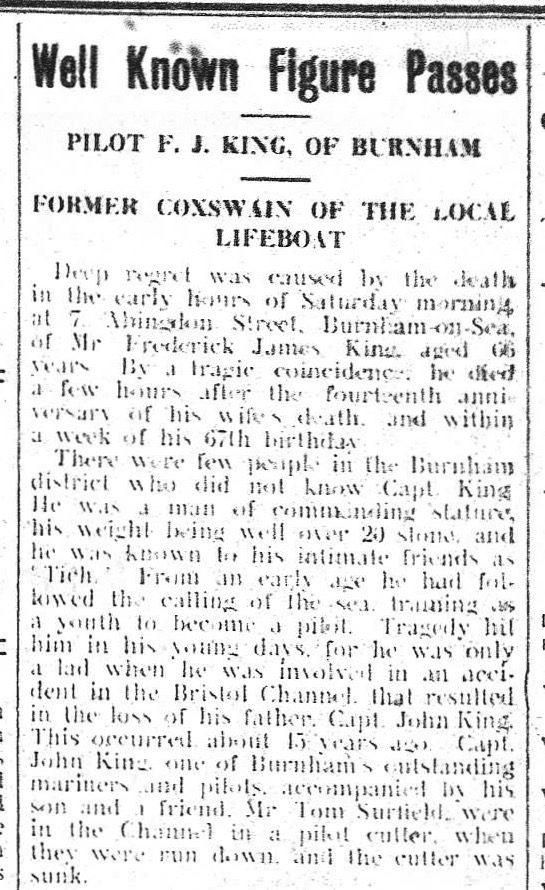
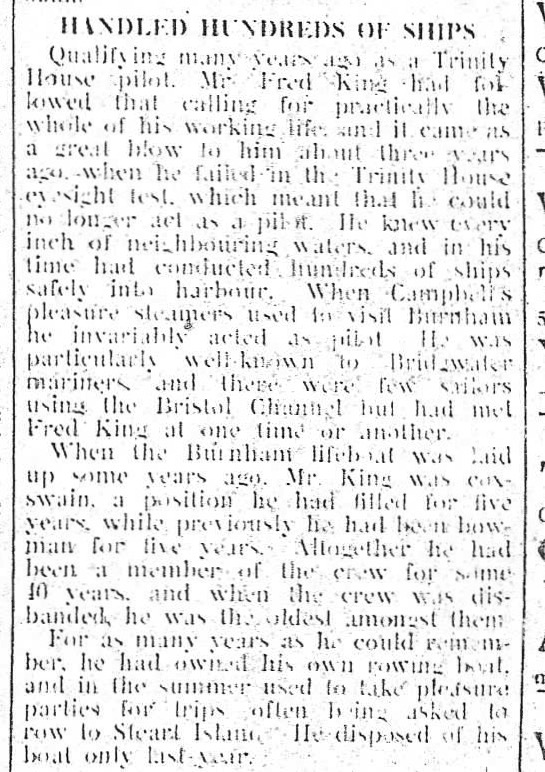
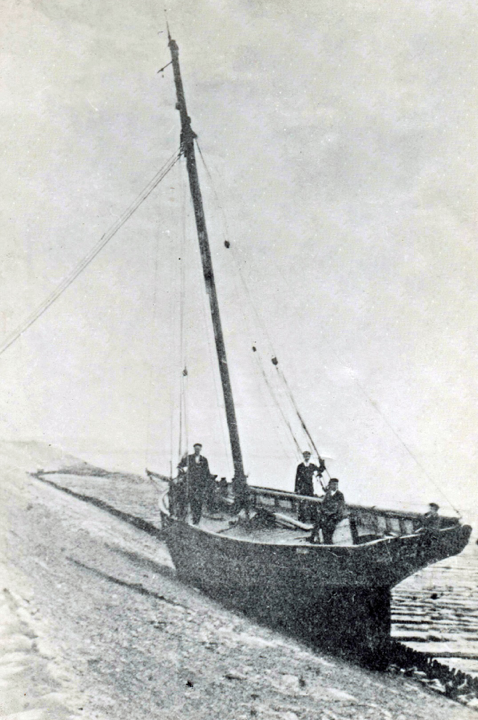 Above: ‘Titch’ King’s pilot boat ‘Polly’. Below ‘Titch’ enjoying a pipe alongside the jetty.
Above: ‘Titch’ King’s pilot boat ‘Polly’. Below ‘Titch’ enjoying a pipe alongside the jetty.
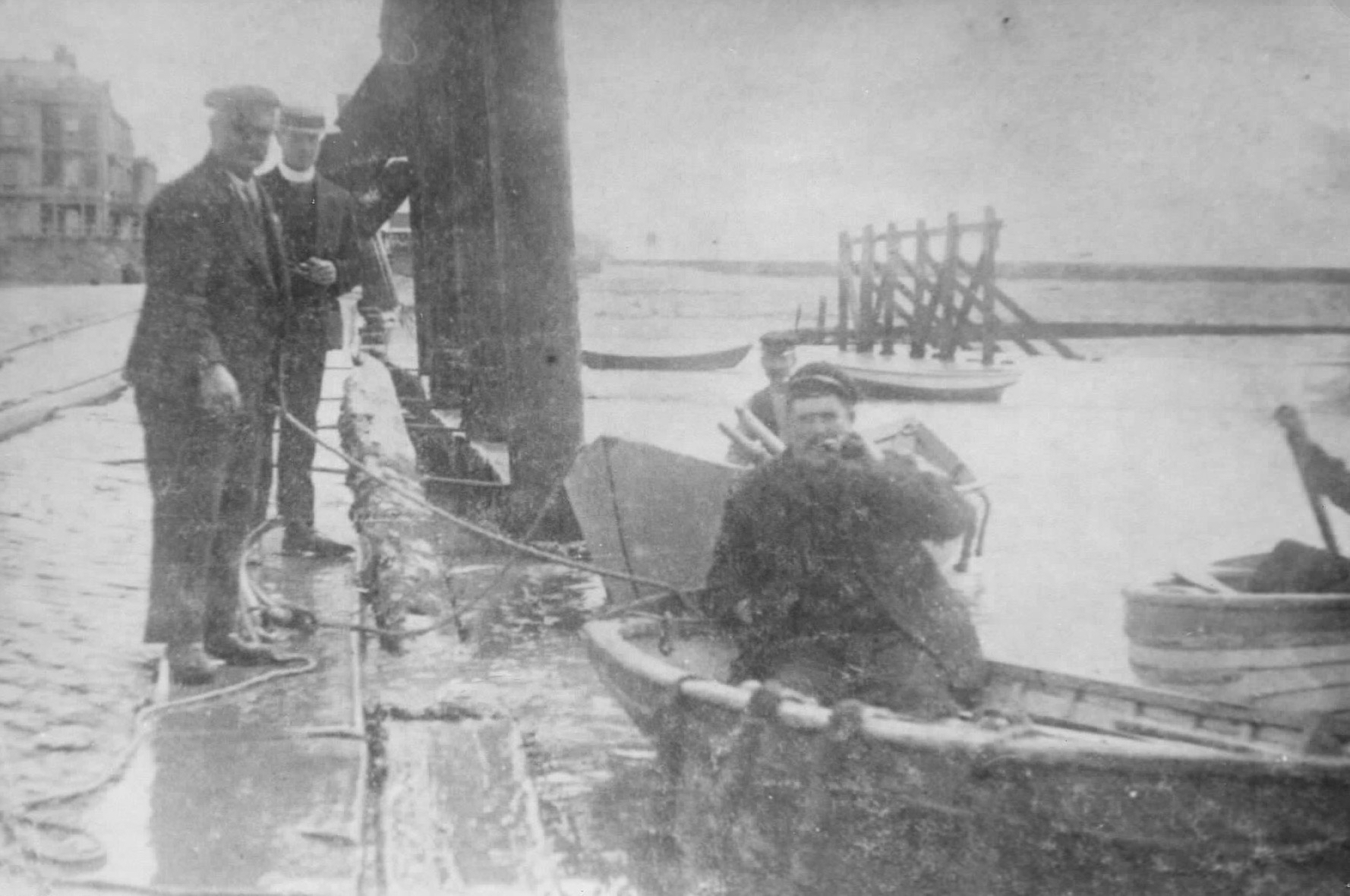
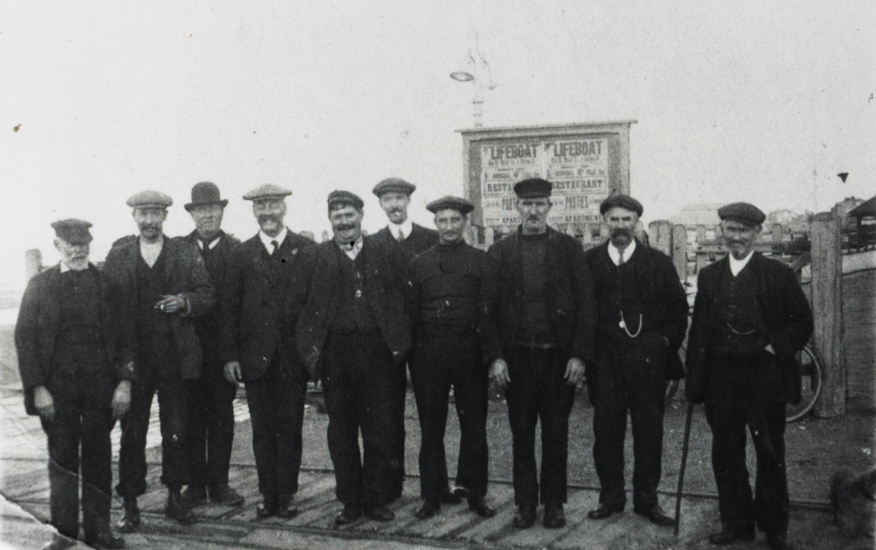 A group of pilots at the top of the jetty. The little fella is in the centre. (Note the billboard behind advertising the Lifeboat Restaurant)
A group of pilots at the top of the jetty. The little fella is in the centre. (Note the billboard behind advertising the Lifeboat Restaurant)
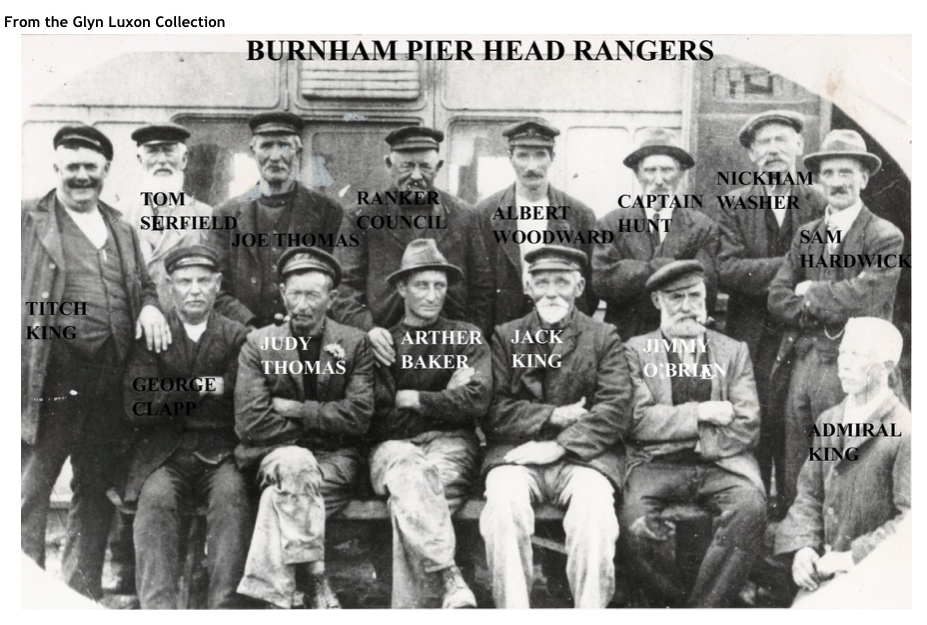
Another group photo taken in front of the ‘Cathedral’ (see South Esplanade page). It is said that one of the tables in the ‘Cathedral’ had the corner cut off in order to allow Titch King to get in behind it. Another story is that a prank was played by youngsters climbing on the top of the carriage and tipping pepper down the chimney, causing the occupants to exit rapidly with streaming eyes.
1896 – a bad year for the pilots
From The West Somerset Free Press 1st August 1896:

A storm period commenced on the Burnham on Sea coast on the 1st of November 1896 during which the pilot boat “ Margaret” of Bridgwater, also the property of Mr O’Brien, was blown aground. She got off this position but the wind blew with such violence on Saturday night that she was again cast ashore at the entrance to the Highbridge river and so much damaged that she will be unfit to be put at sea again. James (Jimmy) O’Brien (1836-1932) was one of the men shown in a photograph of the PierHead Rangers, seated on the right with pipe.
An even more serious event took place during the same period resulting in the death of another member of the King family:


Ranker Council
A retrospective article in the Weekly News in 1992 included memories of ‘Ranker’ Council who can be seen in the back row of the photo above.



A scan of the election card can be found here.
Article in Highbridge, Weston & Burnham Advertiser 1940:
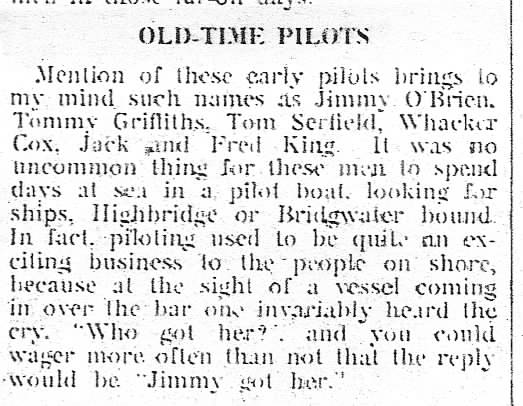
Next a photo from 1938 showing pilot James ‘Jimpy’ Smith (in trilby hat) boarding SS Walborg. Mr Smith can also be seen outside the pilot’s hut on the South Esplanade page
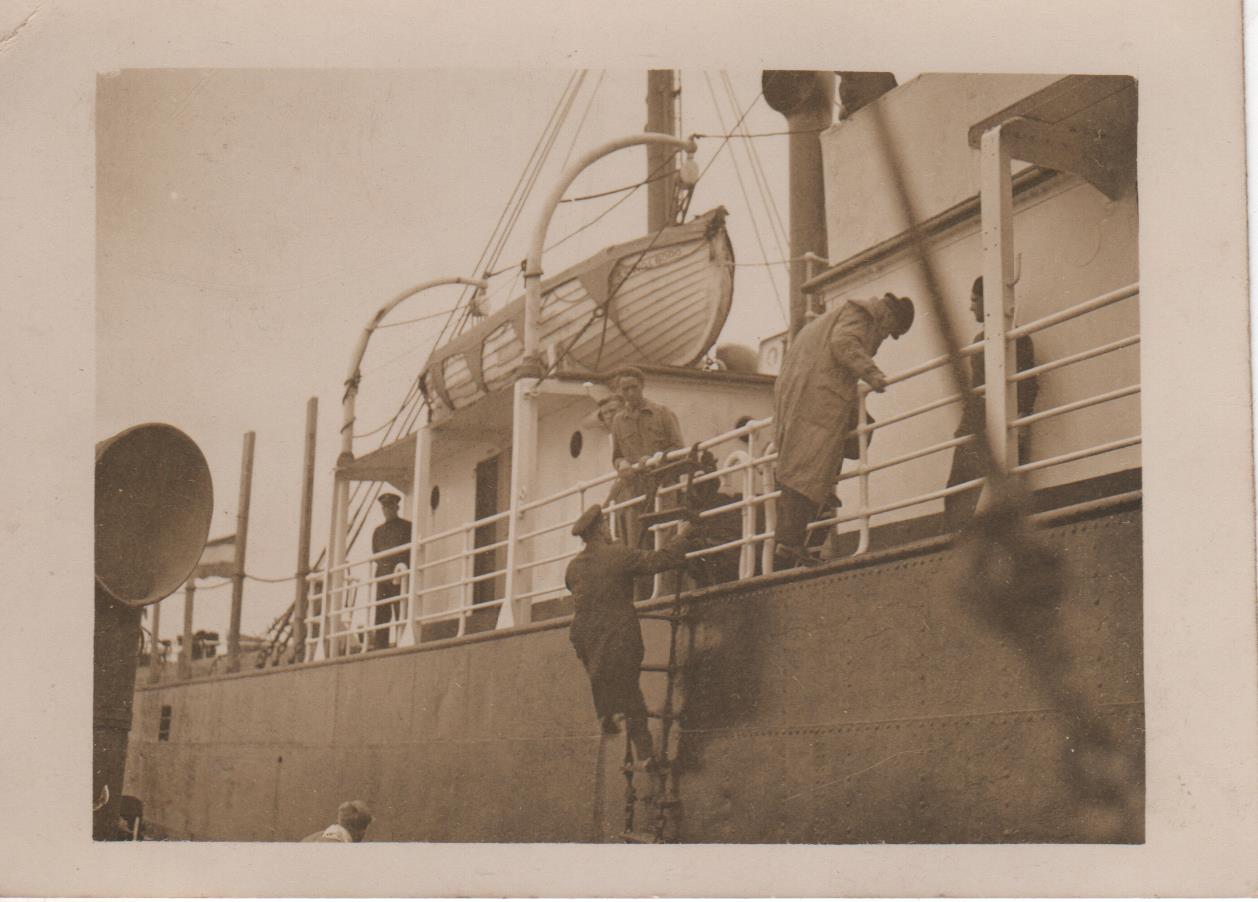
MODERN TRAFFIC
Below are some examples of cargo vessels in the bay:
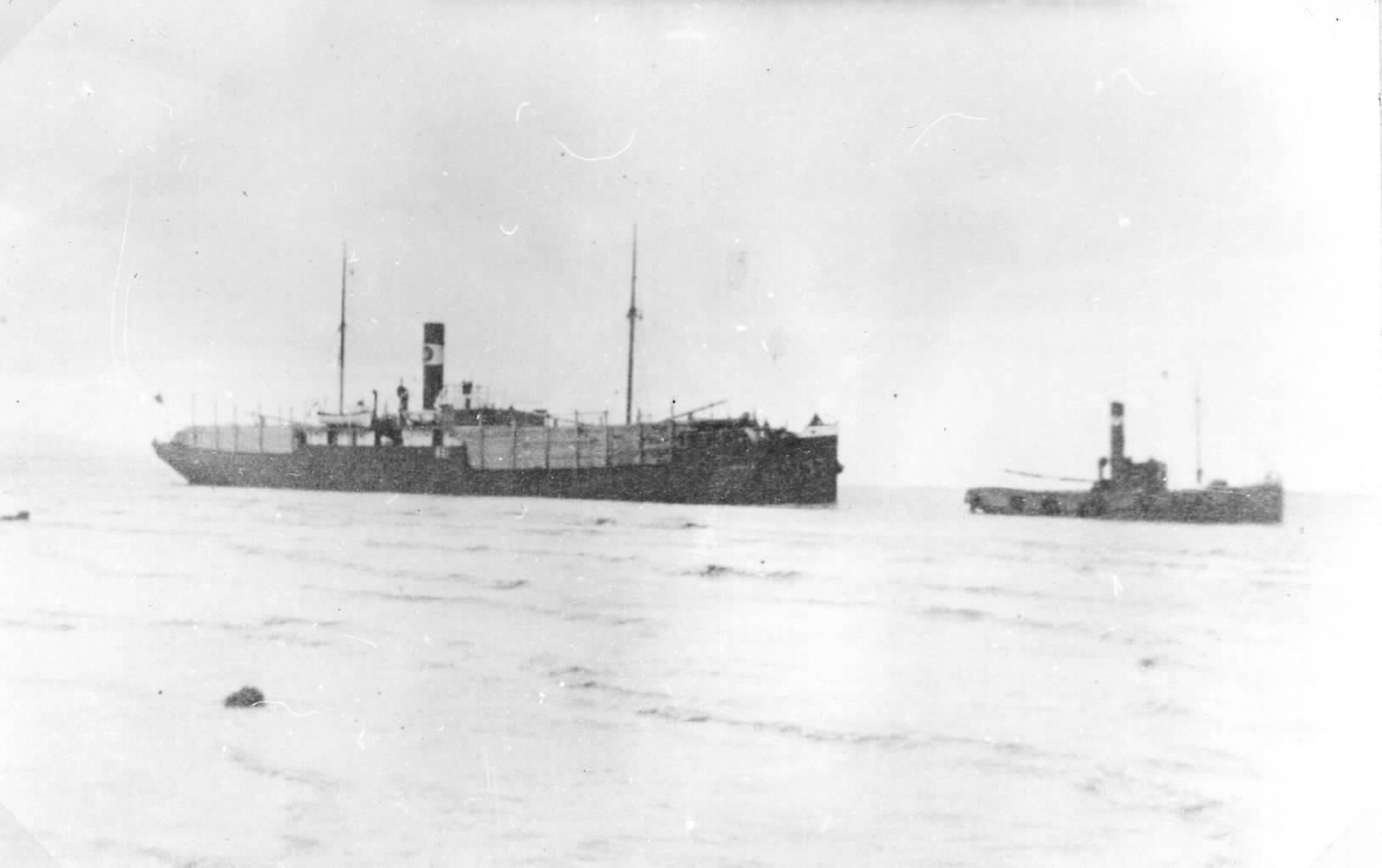 The Primula, of Oslo, and tug Rexford, date not known.
The Primula, of Oslo, and tug Rexford, date not known.
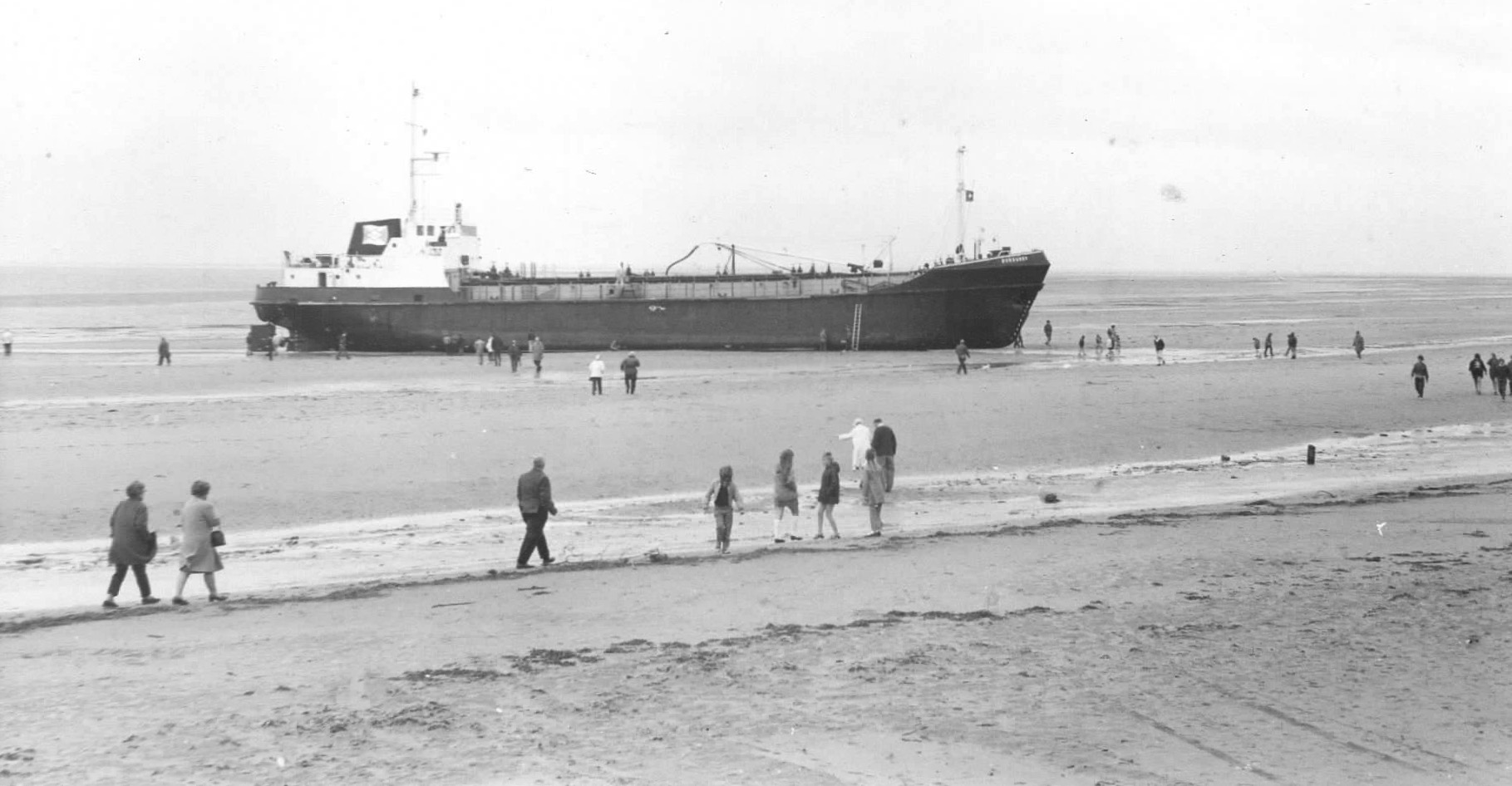 M.V. Burgundy aground, 1970
M.V. Burgundy aground, 1970
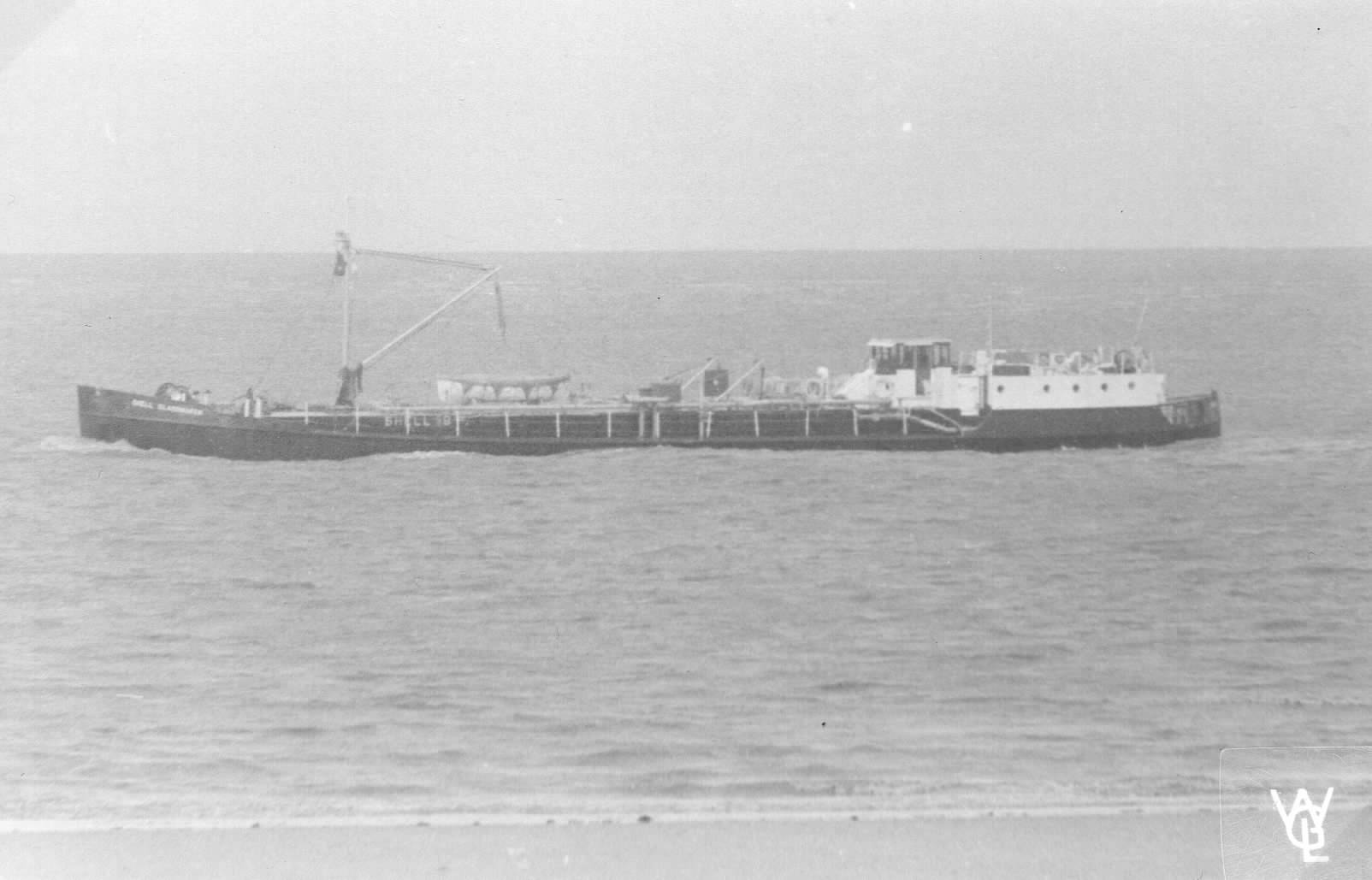
Above: first oil tanker heading for Dunball oil depot.
Below: last oil tanker to Dunball oil depot.
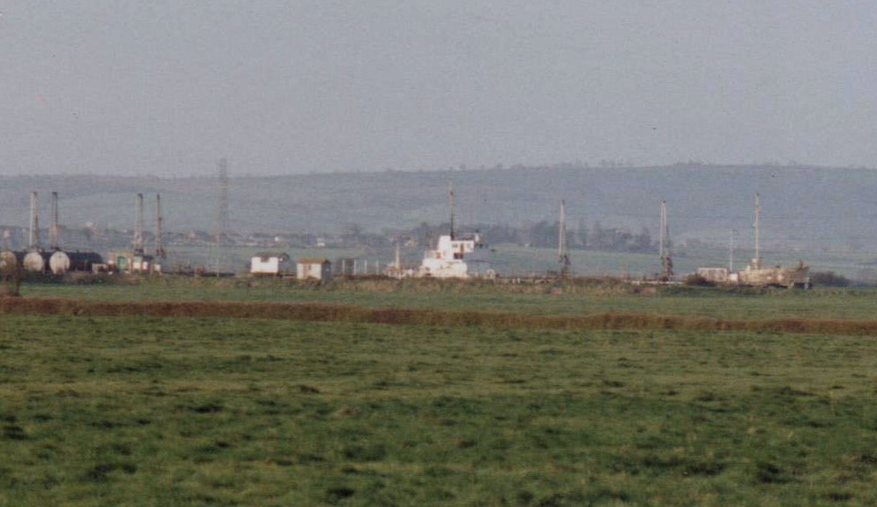
Dredgers still navigate the Parrett to unload at Dunball wharf.
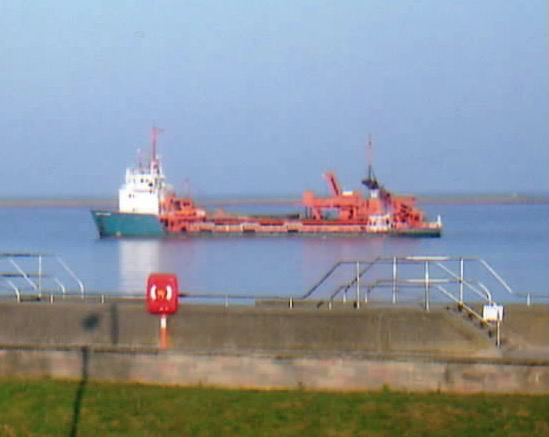
YACHT CLUB
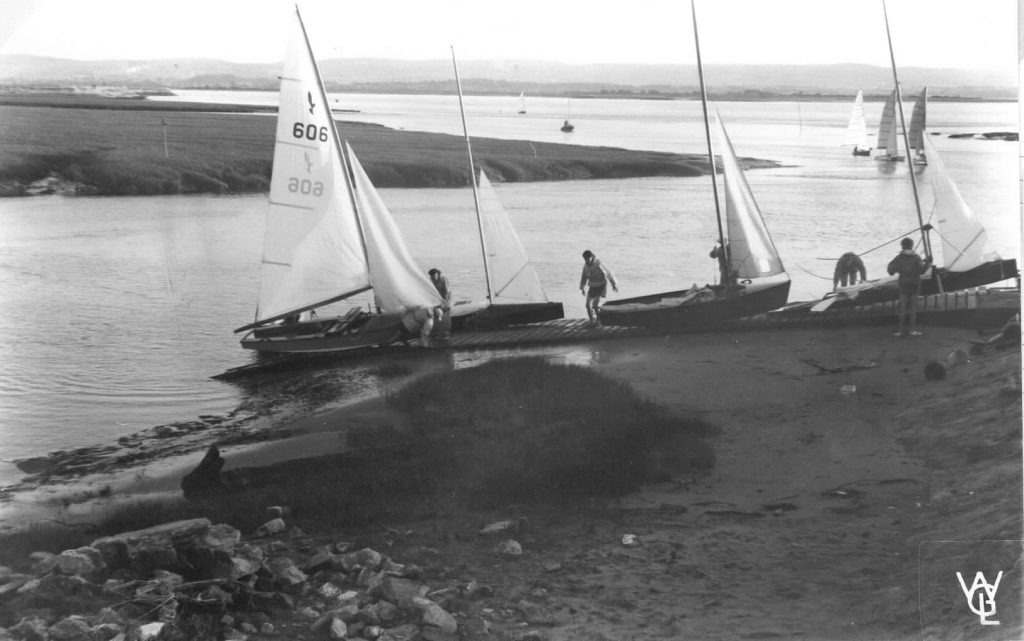
Photo above from 1950’s or 60’s
HOVERCRAFT
For a brief period during the mid 1980’s a hovercraft service operated taking in Weston, Burnham, Minehead, Barry and Cardiff. This had been a long time coming following an experimental service from Weston to Penarth in 1963.
The inaugural flight was on 22nd May 1985, bringing the Mayor of the Vale of Glamorgan, and was the focus of a day of celebration including groups from both sides of the Bristol Channel dressed in traditional costumes and an exchange of gifts.

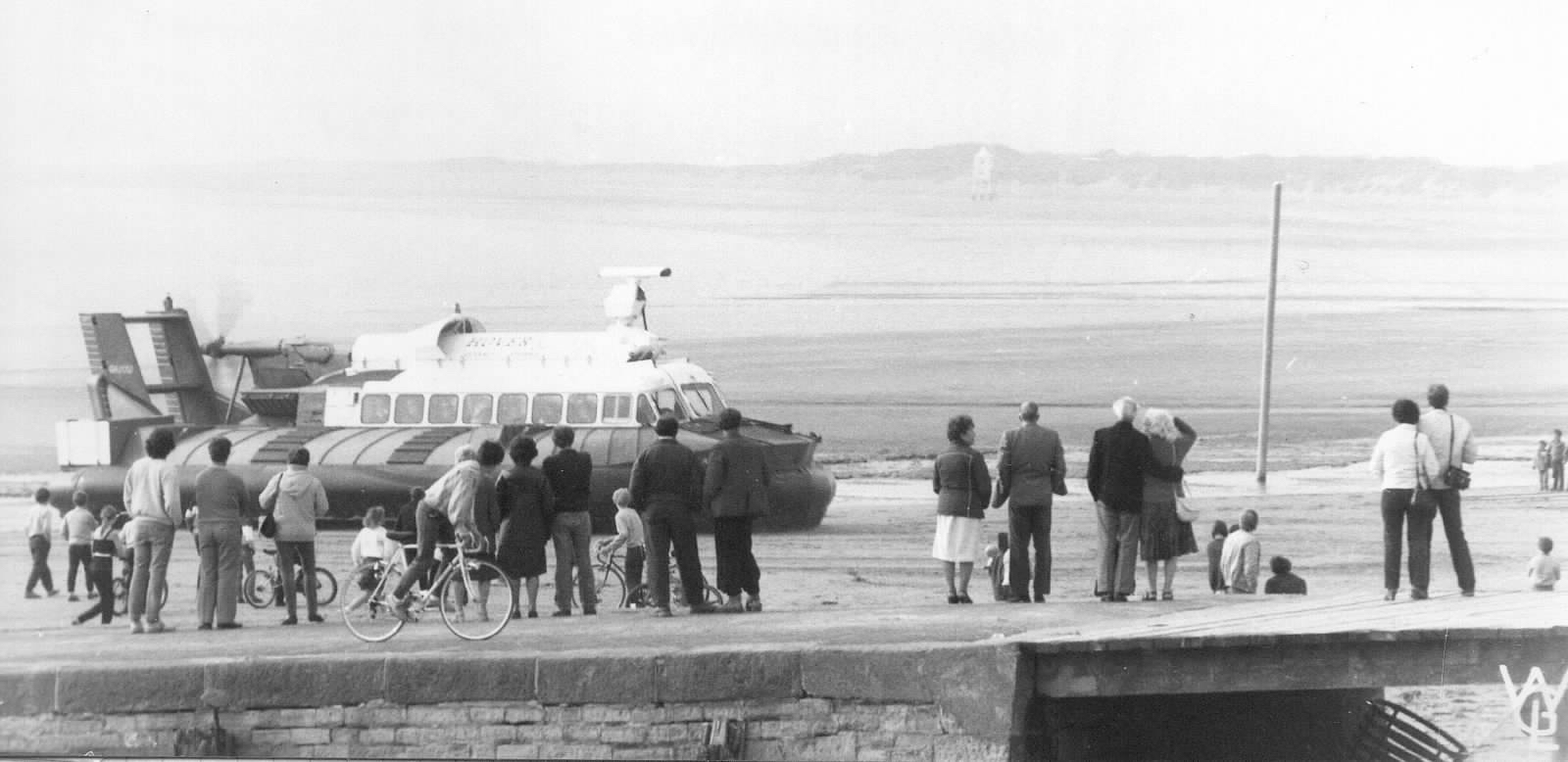
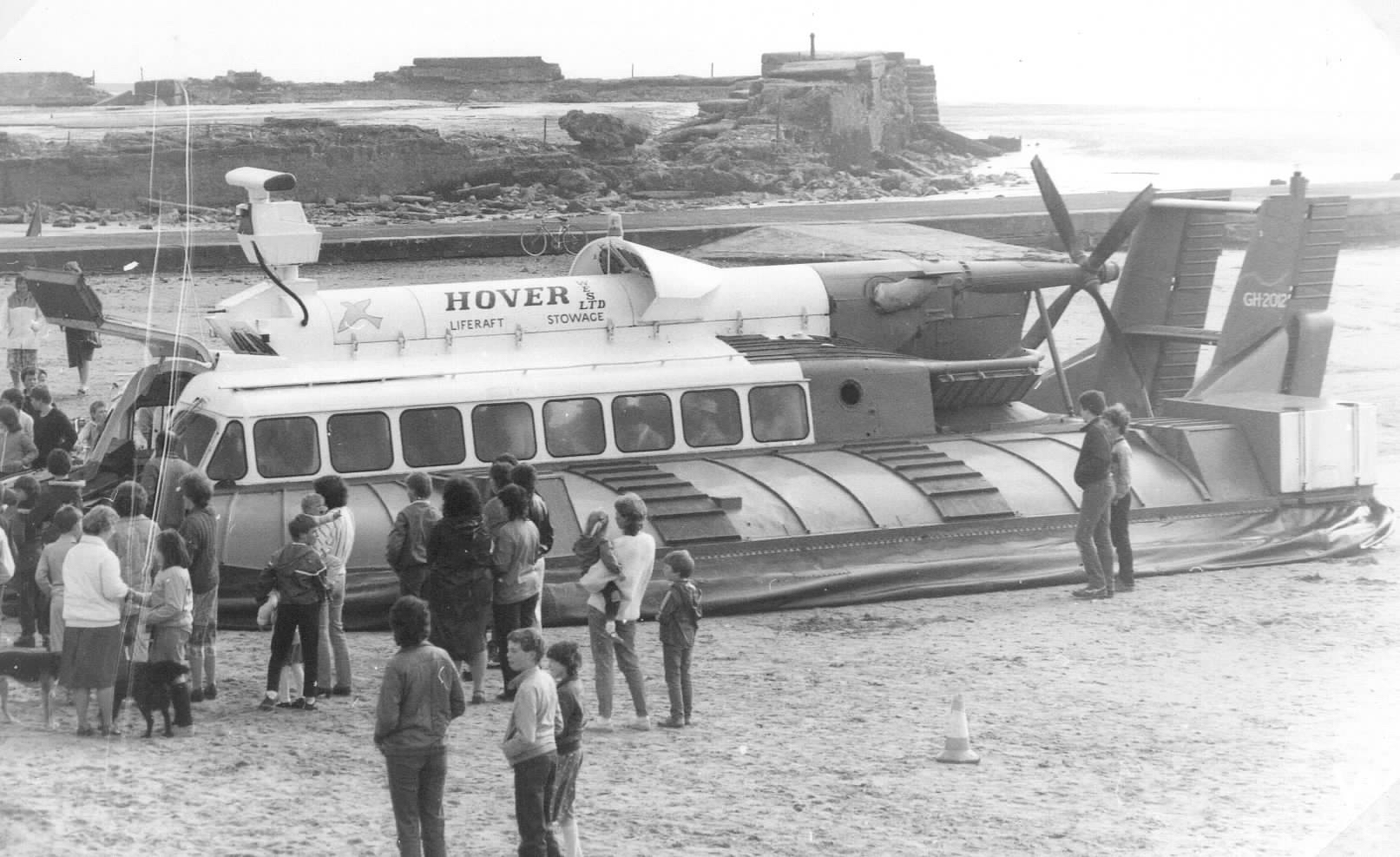
Pictures above from 1985. The remains of Marine Lake can be seen in the background.
Thanks due to Glyn Luxon (deceased) from who’s archive most of these pictures have been obtained.

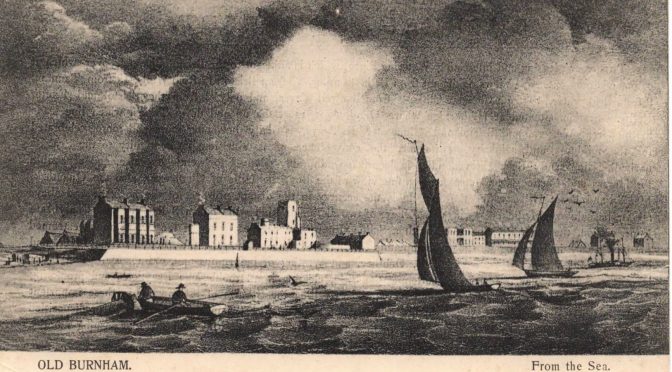
Capture Burnham is fascinating and so well put together. These stories are so romantic and the characters are extraordinary.
Hello Justin and thanks for your lovely comments. If you can make it you may want to attend our History meeting on the 10th May when I shall tell the story of the Berrow Wreck of the Nornen. I have been involved with several heritage projects but this is the one that is real living history as many of the families in Berrow had relatives involved of the day the vessel was beached and stories of this day. More details are on our news page.
Thanks again,
John
Hi Nigel… James O’brien was born in 1836 and died in the first quarter of 1932 aged 96 (Ancestry). This article states he was 95. Allowing for some adjustments to actual dates when he was born and died, the article must have been written in 1930 or 1931. Des P.
Thanks for the detective work Des. I’ve flagged it above.
Hi Nigel and Des, James O ‘ Brien is my Great Great Great Grandfather, I live in Burnham and have a fishing boat. Thanks Simon Stroud
Thanks for your comment Simon. I hope you found the page, and especially the article, interesting.
Thanks for the information and link John.
Another minor marine casualty at Burnham was the SS Holdernith, a coaster beached more or less opposite The Mount in April 1959. A picture of her – not at Burnham – can be found on the transportsofdelight.smugmug website, and there is a Wikipedia entry for her. About a week after her arrival she was refloated undamaged on a higher tide.